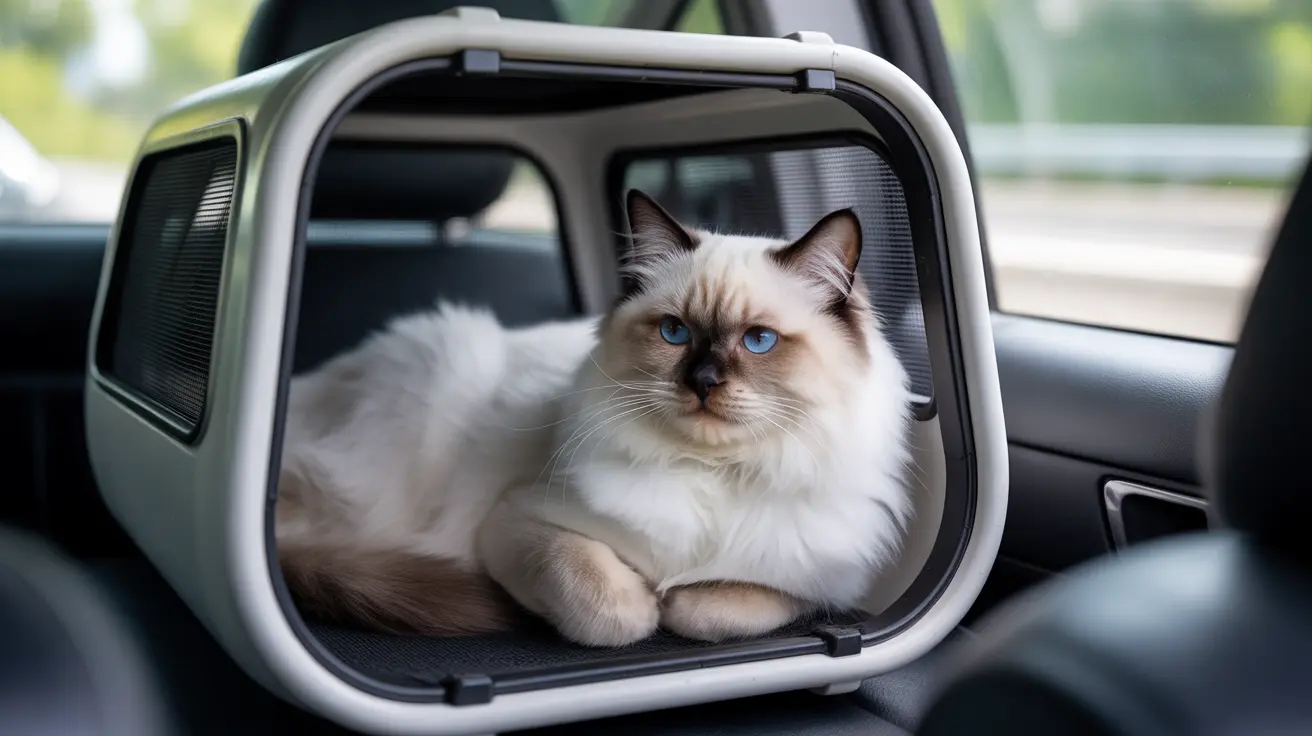Creating a Positive Carrier Experience
The foundation of successful car travel begins with your cat's relationship with their carrier. Start by selecting a carrier that's both secure and comfortable, offering enough space for your cat to stand, turn around, and lie down naturally.
Leave the carrier in your home as part of your cat's daily environment, placing familiar bedding and favorite toys inside. Make it an inviting space by regularly offering treats and meals near or inside the carrier, helping your cat form positive associations.
Preparing for Car Travel Success
Before any car journey, take time to prepare both your vehicle and your cat. Set up the car's temperature to a comfortable level before bringing your cat inside. Position the carrier in a stable location, preferably on the floor behind the front seat, where there's minimal movement and vibration.
Consider using a pheromone spray designed specifically for cats, applying it to the carrier about 15 minutes before travel. These products mimic natural calming chemicals that help reduce anxiety in most cats.
Essential Travel Strategies
During the car ride, maintain a calm environment by playing soft music or speaking gently to your cat. Avoid sudden movements or loud noises that might startle them. For some cats, covering the carrier partially with a light blanket can provide additional security while ensuring proper ventilation.
If your cat shows signs of extreme anxiety, such as excessive vocalization or panting, take breaks during longer trips to allow them to calm down. However, never open the carrier inside the car unless absolutely necessary.
Building Confidence Through Practice
Gradual exposure is key to helping your cat become more comfortable with car travel. Start with short sessions of sitting in the stationary car, then progress to brief drives around the block. Gradually increase the duration of trips as your cat becomes more relaxed.
Always reward calm behavior with treats and praise, reinforcing the positive experience. This consistent practice can significantly reduce travel anxiety over time.
Professional Solutions for Severe Anxiety
If your cat continues to experience severe anxiety despite these measures, consult your veterinarian. They may recommend anti-anxiety medications or specialized behavioral therapy. Never administer any medication without professional guidance, as many human anxiety remedies can be dangerous for cats.
Frequently Asked Questions
How can I gradually get my cat used to traveling in a car to reduce anxiety?
Start with short periods in a stationary car, then progress to brief drives around the neighborhood. Reward calm behavior with treats and gradually increase trip duration as your cat becomes more comfortable.
What are effective ways to calm a nervous cat during a car ride?
Use cat pheromone sprays, maintain a comfortable temperature, play soft music, and speak calmly to your cat. Consider partially covering the carrier and ensuring it's placed in a stable position in the car.
Should I feed my cat before a car trip to prevent carsickness or anxiety?
It's best to avoid feeding your cat 4-6 hours before travel to prevent motion sickness. Offer small amounts of water but save meals for after the journey.
What type of carrier and placement in the car is safest and most comfortable for my cat?
Use a well-ventilated carrier large enough for your cat to stand and turn around. Place it on the floor behind the front seat for maximum stability and minimal vibration.
When is it appropriate to consider medication or professional help for a cat's travel anxiety?
Consider professional help if your cat shows severe anxiety symptoms (excessive vocalization, panting, aggression) despite trying other calming methods. Always consult a veterinarian before using any anxiety medications.
Remember, every cat is unique, and what works for one may not work for another. Be patient and consistent with your chosen methods, and always prioritize your cat's safety and comfort during travel.






